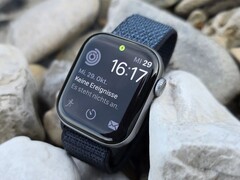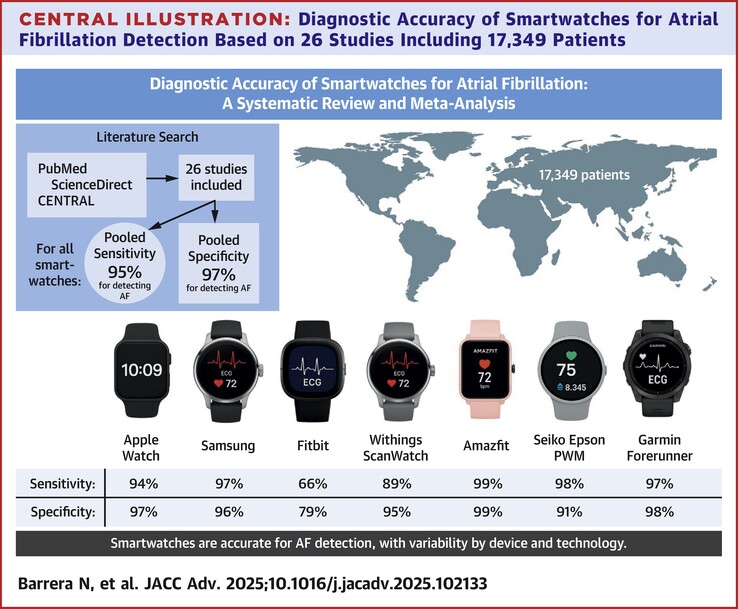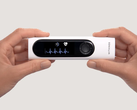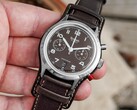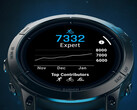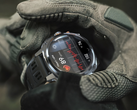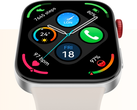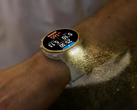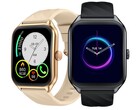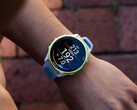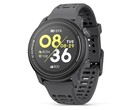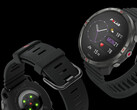A new meta-analysis and systematic review, currently in preprint, shows that smartwatches from various manufacturers can detect atrial fibrillation quite well overall. We will discuss the background of this type of study and the individual technical terms later. The freely accessible meta-analysis by Barrera et al. evaluated studies encompassing a total of 17,349 participants. Sensitivity, specificity, and the area under the curve (AUC) were assessed. The study shows that there are indeed differences in the ability to detect atrial fibrillation, but the technology is generally reliable across several manufacturers. Across all tested devices, the sensitivity was 95% and the specificity 97%.
Differences between manufacturers
There are differences between individual manufacturers. For example, the Garmin Forerunner models with the corresponding function are specified as having a sensitivity of 97% and a specificity of 98%, while the Apple Watch has values of 94% and 97%. Fitbit lags significantly behind with a sensitivity of 66% and a specificity of 79%. The smartwatch that provides the most accurate diagnostics can be best determined from the area under the curve (AUC) of the SROC (Summary Receiver Operating Characteristic), where Samsung performs best. At this point, we would not interpret the results of this study, at least for devices with a sensitivity and specificity of well over 90%, as a strict ranking that should directly influence consumer purchasing decisions. Furthermore, it is not necessarily to be expected that both the use of an electrocardiograph and optical sensors can reliably detect atrial fibrillation, although PPG-based systems enable more frequent or even continuous measurement.
Background information on the results
Some background information may be needed for interpretation and classification, along with an explanation of technical terms. In a medical-diagnostic context, sensitivity specifically indicates how many diseases or "abnormalities" are detected, while specificity indicates how many healthy individuals are correctly identified as healthy. As described in our analysis of the Apple Watch's blood pressure function, these two values are related. Diagnostic procedures can be optimized for higher sensitivity or specificity within certain limits, provided that the procedure is generally suitable. In a screening procedure such as the detection of atrial fibrillation, high sensitivity should be clearly prioritized over high specificity, at least from the individual patient's perspective. While a false-positive result might lead to wasted waiting time at the doctor's office and an unnecessary ECG, this is, of course, a far better alternative to the increased risk of mortality associated with undetected atrial fibrillation.
Background information on the study
The study is a systematic review, meaning that Barrera N et al. did not take any measurements themselves, but rather reviewed existing studies and included them in the evaluation (or not). The advantages of such studies are that the number of cumulative participants is very high and the number of different brands/devices tested is greater. At this point, we would like to clearly point out that this review cumulates different, specific model variants from individual manufacturers and that the number of test subjects per specific device varies greatly in some cases. Furthermore, the measurement methods used in the individual studies are not always the same. The study by Barrera N et al. is currently still in the preprint stage and so has not yet been peer-reviewed. Lastly, the research landscape may still change if, for example, new devices come onto the market.




